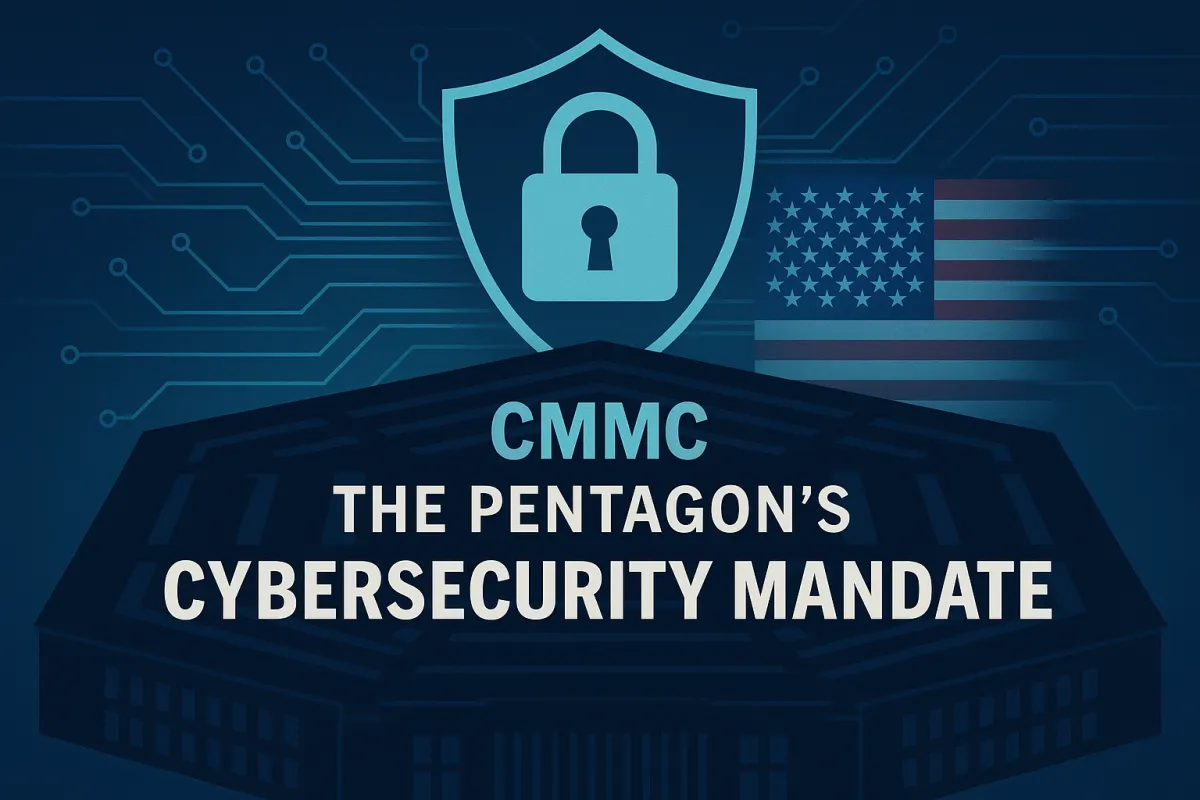
The Pentagon’s Cybersecurity Mandate: CMMC Is Now a Must
The Pentagon’s Cybersecurity Mandate: CMMC Is Now a Must
The U.S. Department of Defense is officially moving forward with CMMC 2.0 — a cybersecurity certification program that will soon be required for defense contracts handling sensitive information. The new rule, published in 2025, launches a phased rollout through 2026 that makes verified cybersecurity practices a condition for certain federal contracts. Contractors must show compliance before award, proving they can protect Controlled Unclassified Information (CUI). This post explains how CMMC 2.0 works, when the rule takes effect, and what every company in the defense supply chain should do right now to stay eligible for future business.
The New Reality for Defense Work
After years of planning, the Department of Defense released the final rule for the Cybersecurity Maturity Model Certification (CMMC 2.0) in 2025. The rule updates the Defense Federal Acquisition Regulation Supplement (DFARS 252.204-7021) and applies to contracts that involve Controlled Unclassified Information (CUI).
Unlike earlier frameworks that relied on self-attestation, CMMC 2.0 requires independent verification of cybersecurity maturity. Contracting officers will confirm certification status in the Supplier Performance Risk System (SPRS) before awarding eligible contracts.
The rollout begins with a limited number of pilot contracts in 2025 and expands across the defense industrial base (DIB) through 2026.
(For perspective on global regulation, see our blog on EU Cyber Laws.)
Understanding CMMC 2.0
CMMC 2.0 simplifies the original five-tier structure into three certification levels:
Level 1 – Foundational: Basic safeguarding of Federal Contract Information (FCI).
Level 2 – Advanced: Alignment with NIST SP 800-171 to protect CUI; most contractors fall here.
Level 3 – Expert: Based on NIST SP 800-172 for organizations supporting high-priority national programs.
Level 1 and some Level 2 contracts allow self-assessment with annual affirmation; others require third-party audits by an accredited CMMC Third-Party Assessment Organization (C3PAO).
Why CMMC Matters
Cyber threats against defense suppliers have surged. Adversaries target small businesses that hold design data, logistics details, and credentials that can be used to reach prime contractors.
CMMC 2.0 raises the baseline: every company handling sensitive DoD data must show that security controls are implemented, monitored, and documented.
For the DoD, the goal is clear — protect information that supports the warfighter by hardening the entire supply chain.
Key Challenges
1. Cost and Preparation
Compliance requires time, expertise, and funding for assessments, policy updates, and technical controls. While the DoD considers these allowable costs, firms must plan budgets carefully.
2. Timeline Uncertainty
Full enforcement will phase in through 2026. Contractors should not wait until CMMC appears in a solicitation; preparation takes months.
3. Flow-Down Requirements
Prime contractors will expect suppliers to match CMMC levels to avoid disqualification.
How to Prepare Now
Assess Your Current Posture
Benchmark against NIST SP 800-171 controls. Identify gaps in access management, incident response, and system security plans.Develop a Plan of Action and Milestones (POA&M)
Document corrective actions with timelines. DoD auditors will review POA&Ms to verify progress.Engage Accredited Experts
Work with Registered Practitioners (RPs) or C3PAOs to validate readiness.Strengthen Documentation and Policies
Auditors must see evidence — written procedures, logs, and training records matter.Train Leadership and Staff
CMMC is not just IT. Executives must integrate cybersecurity into risk and operations planning.
What Happens If You Ignore It
Once CMMC requirements appear in a solicitation, uncertified companies will be ineligible to bid. DoD officials will verify certification levels before award.
Falling short also damages credibility with partners. Prime contractors are already asking suppliers for proof of NIST 800-171 alignment, even ahead of enforcement.
The Bigger Picture
CMMC 2.0 reflects a government-wide shift toward verifiable cybersecurity. Other agencies — such as DHS, GSA, and DOE — are evaluating similar frameworks. In time, independent cybersecurity certification may become a universal expectation for all federal vendors.
Final Word: Compliance Equals Credibility
The Pentagon’s new cybersecurity rule transforms compliance from paperwork into proof. Certification demonstrates that a company can protect national information assets and strengthens trust throughout the supply chain.
Companies that begin now will gain a competitive edge and build resilience against future threats.
Call to Action
Need help mapping your path to CMMC 2.0 compliance? Mike Wright, The Security Guru, helps organizations align cybersecurity programs with DoD requirements and NIST standards.
Contact him today at security.guru/contact.
